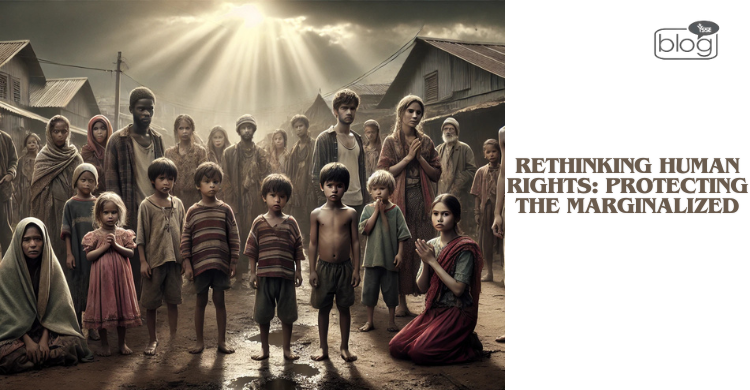Societies of cultures, refugees, ethnic peoples, and those who are disabled are a few instances of disadvantages populations that frequently encounter barriers when attempting to utilize their basic liberties. Inadequate protections from the law, inequality in society, and deeply rooted prejudices are the root causes of these difficulties.
Rights for people are the cornerstone of justice and fairness because they safeguard the liberties and inherent worth of every individual. Nevertheless, in reality, disadvantages population, communities often fall between the gaps, exposing people vulnerable to endemic discrimination, harassment, and negligence.
We must reconsider conventional frameworks and create a more inclusive strategy that puts the necessities of the most disadvantaged first if we are to genuinely preserve the principles of human rights.
The Problem of Being Marginalized
Societies of cultures, refugees, ethnic peoples, and those who are disabled are a few instances of marginalized populations that frequently encounter barriers when attempting to utilise their basic liberties. Inadequate protections from the law, inequality in society, and deeply rooted prejudices are the root causes of these difficulties.
For example, hostile immigration rules frequently deprive refugees of safety and dignity as they flee persecution and conflict. Further exacerbating their historical injustices, indigenous groups are disproportionately impacted by environmental deterioration and land displacement.
The failure to tackle these issues is a fundamental flaw in the conception and application of human rights, not just a policy failure. Conventional frameworks frequently place an emphasis on universal principles without taking marginalized people’ actual life experiences into adequate consideration. Because of this, these communities continue to be marginalized and fight for freedom and recognition.
The Significance of Integration
An inclusive method for dealing with freedom of speech acknowledges that providing everyone with the resources and opportunities they require to succeed is more important than treating them all equally. According to this viewpoint, a one-size-fits-all approach must give way to one that is sensitive to the unique requirements of various populations.
For instance, combating persistent prejudice calls for proactive steps to eliminate systemic disparities in healthcare, employment, and education in addition to laws prohibiting discrimination. Similar to this, strengthening women and girls in patriarchal nations requires cultural changes in addition to legislative changes to upend long-standing gender conventions.
We can find the weaknesses in the current human rights safeguards and create initiatives that genuinely target the roots of injustice by giving the views and stories of the marginalized top priority.
Actions towards a Better Equitable Structure
- Public Participation: To comprehend the particular difficulties and goals of marginalized categories, it is crucial to have firsthand conversations with them. Appropriate and fair laws have a greater possibility to be developed after engagement with these populations.
- Interrelated Assessment: Rights for humanity programs need to take into account how people’s experiences of marginalization are shaped by intersecting identities, including race, gender, and social and economic status. With this strategy, nobody is left behind.
- Enhancing Regional Advocacy: By assisting neighbourhood basic rights advocates and community groups, we can elevate the voices of under-represented groups and promote significant progress from within.
- Responsibility Ways: It is essential to set up strong processes to keep an eye on and respond to human rights abuses. Having businesses and governments responsible for their deeds is part of this.
- Knowledge and Awareness: Using education to promote a human rights culture can help dispel stereotypes and increase compassion and cooperation.
The Purpose of technological advancement and innovation
In the era of digitalization, technology presents fresh opportunities to promote human rights. Online social networking platforms have become important instruments for promoting consciousness and rallying support for under-represented populations. Data-driven management solutions, at the same time, can assist in spotting discriminatory trends and guiding policy choices.
But there are two sides to technology. Algorithms and surveillance technologies have the potential to reinforce prejudices, further excluding disadvantaged groups. As a result, creating moral frameworks that direct the application of technology to advance human rights is essential.
An Urgent Appeal
In addition to being morally right, defending the weak is necessary for a society that is equal and equitable. To oppose the status system and defend the freedoms of the unvoiced; governments, civic the community, and individuals must work together. Through a holistic reimagining of human rights, we can create a world in which people can live in liberty and honour, whatever their background.
As Eleanor Roosevelt once said,
“Where do basic human rights start? at modest locations near home.”
The struggle for individual freedom must be fought and win in these tiny spaces—in businesses, schools, and societies. Let’s meet the obstacles head-on and make sure nobody gets left behind.
To read more blogs, click here.
Writer
Raziya Akter Ratry
Intern, Content Writing Department
YSSE

